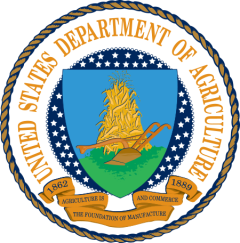USDA: The Big Three, part 18
On Fridays, USDA continues to share the CDC’s COVID-19 community levels to guide masking protocols for the following week. This week, 2,630 counties are LOW, 465 counties are MEDIUM, and 137 counties are HIGH. The CDC COVID community levels and masking protocols for the week of Sunday, May 15, through Saturday, May 21, can be found here.
The CDC continues to recommend that people wear masks in all indoor public transportation settings. Wearing masks is most beneficial in crowded or poorly ventilated locations. When people wear a well-fitting mask or respirator over their nose and mouth in indoor travel or public transportation settings, they protect themselves, and those around them, including those who are immunocompromised or not yet vaccine-eligible, and help keep travel and public transportation safer for everyone. Also, CDC indicates that you should not travel if you have COVID-19 symptoms, tested positive for COVID-19, are waiting for results of a COVID-19 test, or had close contact with a person with COVID-19 and are recommended to quarantine.
For additional information see the latest versions of the Safer Federal Workforce Task Force Guidance on masking, the USDA COVID-19 Workplace Safety Plan, and our Frequently Asked Questions on USDA’s Response to COVID-19 Workplace Safety.
This week, we have included two COVID-19 related questions and one “tip of the week” related to the return to the physical workplace.
1. My employee emailed me the results of their COVID-19 screening test. Is this considered medical information? How should I store the results?
Yes. The results of a COVID-19 screening test are considered medical records. This means the information is subject to the confidentiality requirements of the Rehabilitation Act and the Privacy Act. In order to keep test results strictly confidential, access must be limited to the supervisor and those on a need-to-know basis. To ensure these requirements are met, supervisors should keep emails containing employee test results (as well as any other type of medical information) in a separate folder of their work email accounts and should not intermingle such information with other emails.
2. What is the latest CDC guidance and definition on “close contacts?”
A close contact is person who was less than 6 feet away from someone with confirmed or suspected COVID-19 for a 15 or more cumulative minutes in a 24-hour period. Here is the CDC fact sheet on how to determine if someone is a close contact and what close contacts should do based on their vaccination status. The CDC also provides this content in ADA-accessible format on their website.
3. A best practice for operating in a hybrid work environment is creating separate routines for days that are at home versus days that will be at the physical workplace.
Employees and supervisors should discuss which tasks are best accomplished at home and which are done best at the physical workplace. Employees and supervisors also should discuss the best times for completing the tasks by recognizing some employees are most productive early in the morning while others may be more productive later in the day. Be flexible and build in time to assess whether the routines are working or need adjustment. AgLearn contains many helpful courses on “return to the physical workplace.”
The Big Three: Part 17
To the extent this policy may constitute a change in a condition of employment for bargaining unit employees, agencies/offices will implement it in accordance with the terms of their current labor agreement and 5 U.S.C. Chapter 71. If you are a bargaining unit employee and have questions regarding the content of this message and its potential impact on a current labor agreement, please refer them to your local union representative.

